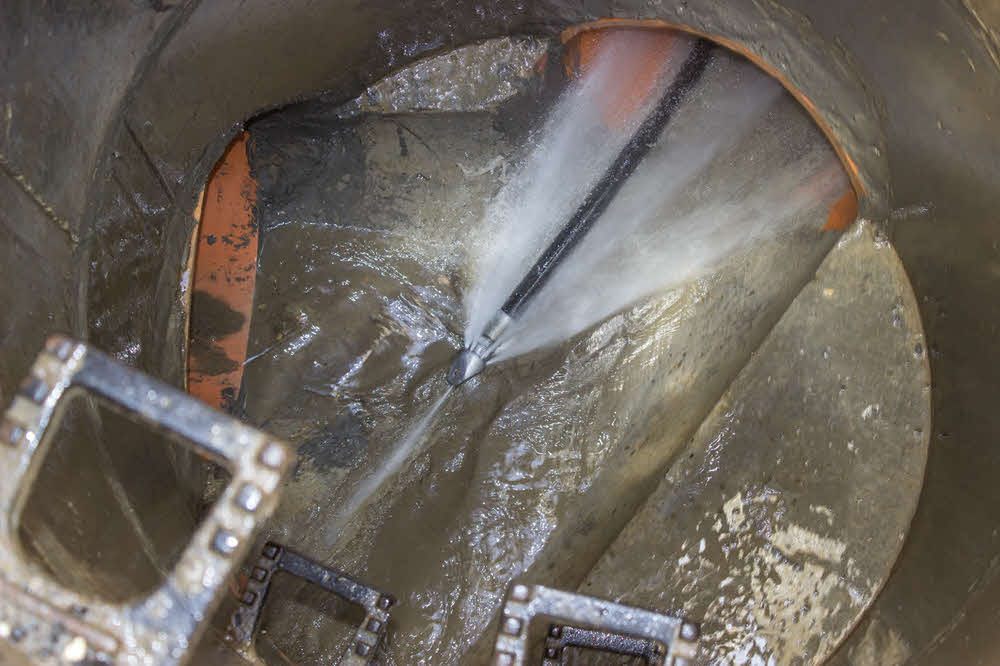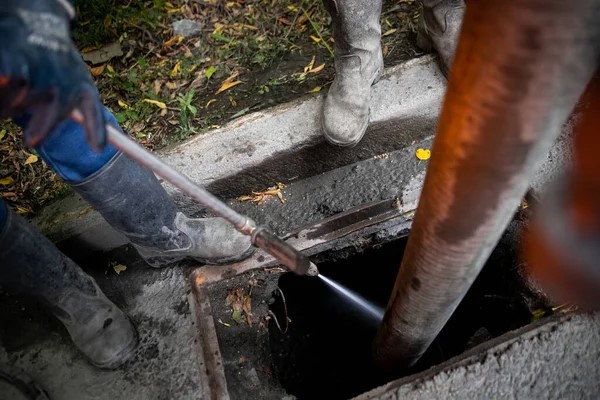Sewer Clean Out Servicesin Saint Clair Shores MI
Sewer Clean Outs to Keep Your Plumbing Running Smoothly
We Are Locally Owned & Operated For Over 37 Years
Contact Us Today!
We Serve Businesses In And Around The Following Cities:
About Sewer Clean Out Services
The Art of Sewer Clean Out in Commercial Properties in Saint Clair Shores
Commercial properties in the bustling city of Saint Clair Shores face an inevitable, yet often underestimated challenge – managing their sewer systems. This task, an integral part of commercial building maintenance, often goes overlooked until severe issues arise. To avoid such problems from surfacing, it’s crucial to comprehend the role of Sewer Clean Out. This guide dives deep into this essential service, offering comprehensive insights and sharing the importance of implementing these practices for the optimal functioning of your commercial property’s sewer system.
What is a Sewer Clean Out?
Sewer Clean Out refers to the process where professionals perform actions designed to maintain, fix, or in extreme cases, replace sewer lines to ensure optimal functioning. Technicians may utilize various strategies to address issues like sewer drain blockages or clogged sewer pipes, such as hydro jetting or jetting sewer lines.
It’s essential to note that the cost to fix a sewer line or the sewer line replacement cost can significantly vary based on the severity of the issue and the solution employed. For example, trenchless sewer line replacement often proves less invasive and costly than more traditional methods.
Importance of Sewer Clean Out for Commercial Properties
Commercial properties heavily rely on efficient sewer systems. With multiple operations often occurring simultaneously, a dysfunctional main sewer line can result in downtime, impacting business productivity. Moreover, ignoring such issues can lead to problems becoming more widespread and expensive to solve later.
Implementing regular Sewer Clean Out services with experienced technicians such as those at D&J Contracting ensures a swift resolution of problems before they escalate. By addressing issues like a sewer drain clog or replacing a sewer line in its early stages, you can lower the associated costs and limit disruption to your business.
The Process of Sewer Clean Out
The Sewer Clean Out process starts with a thorough inspection of the plumbing line to locate any existing or potential issues. Depending on the findings, solutions can range from simple cleaning tasks like hydro jetting, to more extreme measures like trenchless sewer line replacement or installing a new sewer line.
Whether it’s a collapsed sewer line or a simple blockage, businesses in Saint Clair Shores can entrust D&J Contracting with their Sewer Clean Out needs. Their expert team is adept at quickly identifying and resolving sewer problems, ensuring minimal disruption to commercial operations.
Adapting To Your Property’s Unique Needs
Every commercial property is unique and may require different solutions. Some might need installation of a new sewer line due to increased usage, while others may require the replacement of an existing line due to its deteriorating condition. A global solution doesn’t necessarily apply for each one.
Elaborate processes like adding a cleanout to a sewer line, installing a french drain into a sewer line, or a complete sewer line replacement near you are all within D&J Contracting’s wheelhouse.
Economical Aspects of Sewer Clean Out
Factors including labor costs, repair materials, and the extent of the damage typically influence the price to replace a sewer line or fix it. However, a well-maintained sewer system can save considerable costs in the long run.
D&J Contracting offers budget-friendly service, ensuring any plumbing sewer lines are always performing their best, ultimately helping you avoid hefty sewer line repair costs.
In conclusion, businesses in Saint Clair Shores can significantly benefit from regular and professional Sewer Clean Out services. By detecting potential issues early, finding the most effective solutions, and implementing cost-effective strategies, you can ensure the longevity of your business’s plumbing system. Trust D&J Contracting’s team of experts to keep you’re sewer lines functioning efficiently, ultimately supporting your business’s smooth operation.
Sewer Clean Out Services Gallery


Call Us Today to receive your Free Quote for
Sewer Clean Out in Saint Clair Shores
Serving: Saint Clair Shores, Michigan

About Saint Clair Shores, Michigan
|
|
This section does not cite any sources. (February 2019)
|
Located along the shores of Lake St. Clair and inhabited by French settlers as early as 1710, during which time the area was referred to as L’anse Creuse, the future St. Clair Shores would remain mainly a rural farming area populated by largely French and German immigrant families into the early 20th century. These local family surnames have survived into the 21st century and can be found in the surnames of current residents and among numerous residential street names.
From 1835 until 1843, the area was part of Orange Township, among the first townships platted in Michigan and part of Macomb County. In 1843, Orange Township was renamed Erin Township, in homage to the numerous Irish immigrants who had moved into the area and had begun to exert their political influence. From 1843 until 1911, what is now St. Clair Shores was a part of Erin Township, parts of which make up today’s municipalities of Eastpointe, Roseville, and St. Clair Shores.
In 1911, the eastern portion of Erin Township was partitioned off to become Lake Township. St. Clair Shores was incorporated as a village in 1925 and remained a part of Lake Township until, after numerous failed attempts, its residents voted to incorporate as the city of St. Clair Shores in January 1951. Lake Township continued adjacent to the city until 2009, when residents of the village of Grosse Pointe Shores (that portion of Grosse Pointe Shores in Macomb County located within Lake Township) voted to incorporate as a city.
Beginning around the time of the First World War, St. Clair Shores became a favored playground for gamblers, rum runners, and lakefront tourists alike, culminating during Prohibition, but continuing through the Second World War era. During these years, the village was the home to many popular roadhouses, blind pigs, and gambling establishments, such as the Blossom Heath Inn. St. Clair Shores’ lakefront location and proximity to Canada coupled with a receptive and often participative community made it an advantageous haven for rum runners, and the area was actively involved in the rum-running era of Prohibition. Local residents, politicians, and law enforcement of the era were known to sometimes conflict with both state and federal officials over their attempts to regulate these illegal, but economically vital, activities within the community.
The Eagle Pointe subdivision, one of many platted within the village of St. Clair Shores during the early 20th century, was platted along a part of the lake shore in 1916. During the next few decades, dozens of subdivisions were platted through the local farmland, but most were not developed in earnest until after the Second World War, when St. Clair Shores became the fastest-growing suburb of Detroit during the 1950s.
From 1927 until 1959, the community was the location of the Jefferson Beach Amusement Park, a major lakefront attraction for the Detroit area and beyond. Opened in 1927, it boasted the longest roller coaster in the United States and numerous other midway attractions, a large, ornate lakefront dance pavilion, and a large, sandy beach popular with swimmers and sun bathers. In 1955, a fire destroyed some of the attractions and buildings within the once-popular park, and this, coupled with changing public tastes, accelerated its demise. While the owners of Jefferson Beach Amusement Park considered rebuilding, by this time the park was not popular with local government officials, and the city council had begun exploring forcing the closure of the facility or purchasing it for public use. Instead, the park owners, who had previously started building an onsite marina facility, began to expand that part of the facility. By 1959, the remaining park amusements and buildings were demolished to make room for the greatly enlarged Jefferson Beach Marina. All that remained of the once grand amusement park was its large, ornate lakefront dance coliseum, which for years thereafter was relegated to use as a marina storage facility and marine supply store until it, too, was destroyed by fire.
St. Clair Shores is in southern Macomb County, on the western side of Lake St. Clair. It is bordered to the west by the cities of Roseville and Eastpointe and to the south, in Wayne County, by Harper Woods, Grosse Pointe Woods, and Grosse Pointe Shores. Interstate 94 runs along the western edge of the city, with access from Exits 224 through 230. I-94 leads southwest 13 miles (21 km) to midtown Detroit and northeast 40 miles (64 km) to Port Huron.
According to the U.S. Census Bureau, St. Clair Shores has a total area of 14.40 square miles (37.30 km), of which 2.72 square miles (7.04 km), or 18.9%, are covered by water. The city has 14 miles (23 km) of canals. Most of these canals are found in the Nautical Mile, which is along Jefferson between 9 Mile and 10 Mile Roads.
| Census | Pop. | Note | %± |
|---|---|---|---|
| 1930 | 6,745 | — | |
| 1940 | 10,405 | 54.3% | |
| 1950 | 19,823 | 90.5% | |
| 1960 | 76,657 | 286.7% | |
| 1970 | 88,093 | 14.9% | |
| 1980 | 76,210 | −13.5% | |
| 1990 | 68,107 | −10.6% | |
| 2000 | 63,096 | −7.4% | |
| 2010 | 59,715 | −5.4% | |
| 2020 | 58,874 | −1.4% | |
| U.S. Decennial Census 2018 Estimate |
|||
As of the census of 2010, there were 59,715 people, 26,585 households, and 15,932 families living in the city. The population density was 5,139.0 inhabitants per square mile (1,984.2/km). There were 28,467 housing units at an average density of 2,449.8 per square mile (945.9/km). The racial makeup of the city was 92.7% White, 3.9% African American, 0.3% Native American, 1.0% Asian, 0.2% from other races, and 1.7% from two or more races. Hispanic or Latino residents of any race were 1.7% of the population.
Of the 26,585 households, 24.6% had children under 18 living with them, 43.6% were married couples living together, 11.9% had a female householder with no husband present, 4.4% had a male householder with no wife present, and 40.1% were not families. About 35.1% of all households were made up of individuals, and 15.5% had someone living alone who was 65 or older. The average household size was 2.24, and the average family size was 2.90.
The median age in the city was 44.2 years; 19% of residents were under 18; 7% were between18 and 24; 24.9% were from 25 to 44; 29.7% were from 45 to 64; and 19.2% were 65 or older. The gender makeup of the city was 47.8% male and 52.2% female.
As of the census of 2000, 63,096 people, 27,434 households, and 17,283 families were living in the city. The population density was 5,472.3 inhabitants per square mile (2,112.9/km). The 28,208 housing units had an average density of 2,446.5 per square mile (944.6/km). The racial makeup of the city was 96.89% White, 0.69% African American, 0.28% Native American, 0.84% Asian, 0.20% from other races, and 1.10% from two or more races. Hispanic or Latino residents of any race were 1.18% of the population.
Of the 27,434 households, 24.1% had children under 18 living with them, 49.5% were married couples living together, 10.0% had a female householder with no husband present, and 37.0% were not families. About 32.7% of all households were made up of individuals, and 16.3% had someone living alone who was 65 years of age or older. The average household size was 2.28 and the average family size was 2.92.
In the city, the age distribution was 20.2% under 18, 6.2% from 18 to 24, 28.8% from 25 to 44, 23.1% from 45 to 64, and 21.8% who were 65 or older. The median age was 42 years. For every 100 females, there were 90.9 males. For every 100 females 18 and over, there were 86.8 males.
The median income for a household in the city was $49,047, and for a family was $59,245. Males had a median income of $46,614 versus $31,192 for females. The per capita income for the city was $25,009. About 2.6% of families and 3.7% of the population were below the poverty line, including 4.4% of those under 18 and 4.9% of those 65 or over.
St. Clair Shores has three school districts: South Lake Schools, which serves the southern portion of the city, Lakeview Public Schools, which serves the central portion of the city, and Lake Shore Public Schools, which serves the northern portion of the city. Each district operates one high school within the city.
Private, parochial schools include St. Germaine, St. Isaac Jogues, and St. Joan of Arc.
Call Us Today to receive your Free Quote for
Sewer Clean Out in Saint Clair Shores
Related Services in Saint Clair Shores, Michigan
We Serve Businesses In The Following Zip Codes:
48007, 48015, 48021, 48026, 48035, 48036, 48038, 48042, 48043, 48044, 48045, 48046, 48047, 48048, 48050, 48051, 48066, 48071, 48080, 48081, 48082, 48083, 48084, 48085, 48088, 48089, 48090, 48091, 48092, 48093, 48098, 48099, 48225, 48230, 48236, 48310, 48311, 48312, 48313, 48314, 48315, 48316, 48317, 48318, 48397